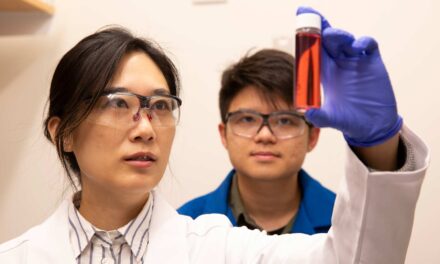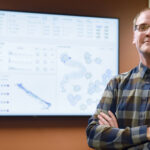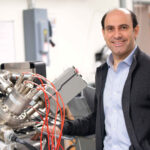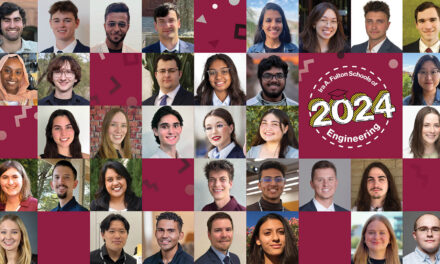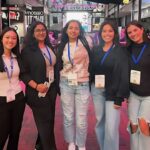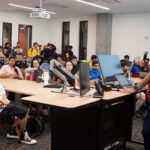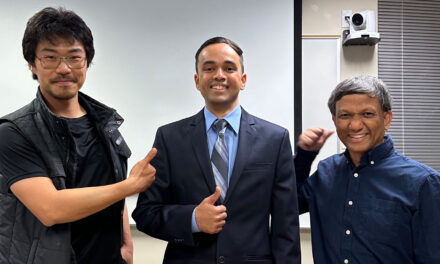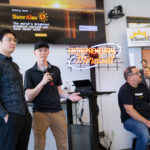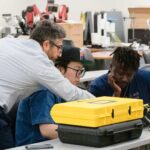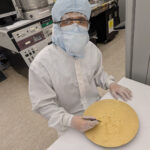
Improving efficiency to lower costs nets an NSF CAREER Award
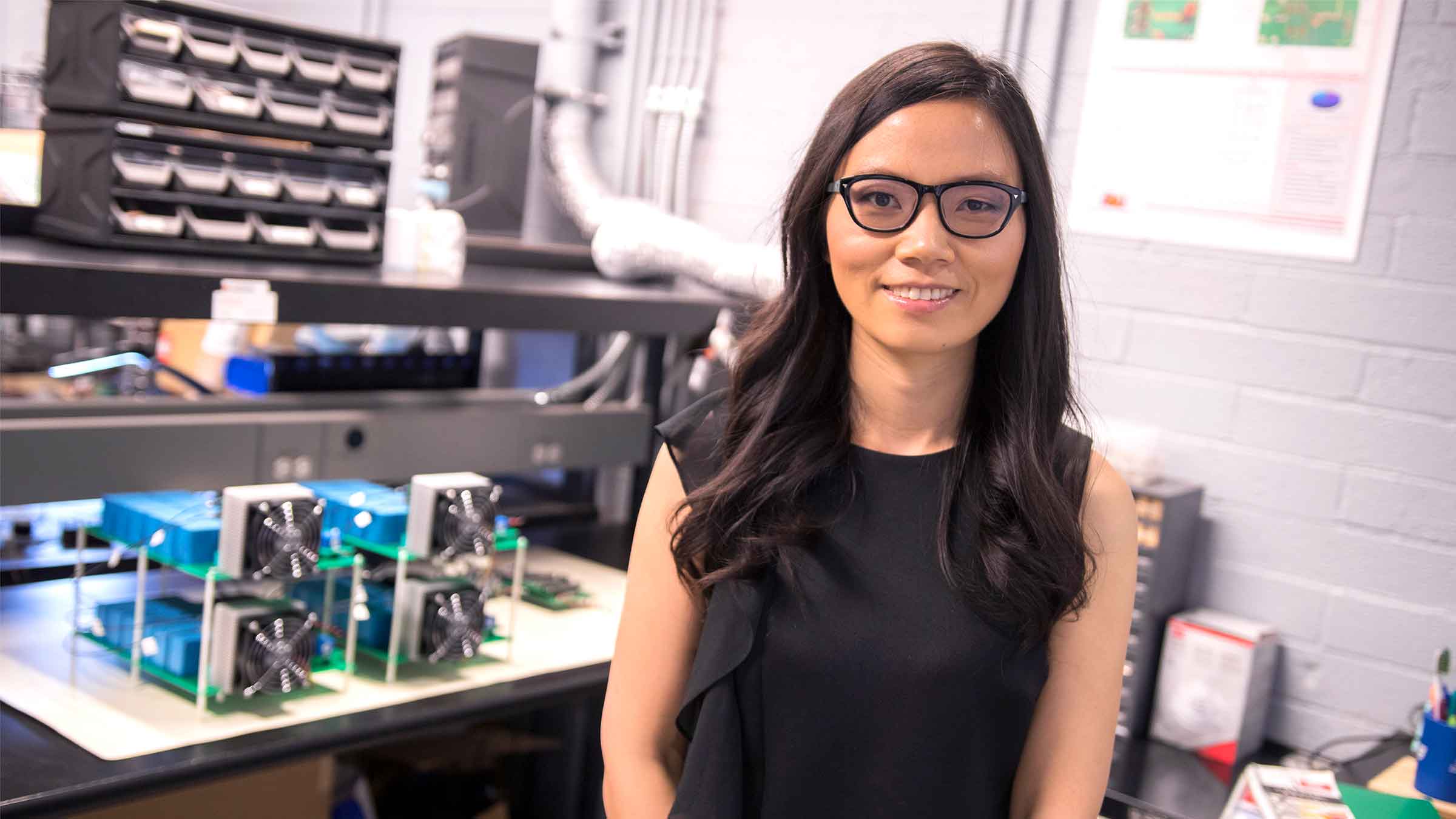
Above: Assistant Professor Qin Lei is one of 10 Ira A. Fulton Schools of Engineering faculty members to receive an National Science Foundation CAREER Award for 2018 to 2019. She is accelerating the development and deployment of a new class of efficient, lightweight and reliable high-power, high-voltage power converters.
Ten faculty members in the Ira A. Fulton Schools of Engineering have received NSF CAREER Awards between September 2018 and April 2019.
Today, electricity generation currently accounts for 40 percent of primary energy consumption in the United States and is projected to increase by more than 50 percent in the next 25 years.
Power electronics is an intermediate stage between electricity generation and load that controls and converts electrical power to provide optimal conditions for energy transmission and consumption. Estimates suggest that the fraction of electricity processed through power electronics will have a twofold increase over the current proportion and could be as high as 80 percent by 2030.
The development of advanced power electronics with exceptional efficiency, reliability, functionality and form factor is in high demand in the marketplace. These goals can be accomplished both directly by inherently more efficient converter designs, and indirectly by facilitating increased adoption of fundamentally higher-performing materials.
Qin Lei, an assistant professor of electrical engineering in the Ira A. Fulton Schools of Engineering at Arizona State University, is working to accelerate the development and deployment of a new class of efficient, lightweight and reliable high-power, high-voltage power converters (>10 kV, >1 MW) based on the series and parallel connected low-voltage, wide-bandgap semiconductors. Her work is supported by a $500,000, five-year National Science Foundation Faculty Early Career Development Program (CAREER) Award.
Lei will use transformational gate driving and device protection techniques that enable effective operation at high switching frequency, high temperature and low energy loss. Such technological breakthroughs have the potential to catalyze the adoption of higher-performance power converters in various critical applications, including motor drives, power supplies, data centers, distributed energy and the grid, ship propulsion, automotive, aerospace and rail operations. Such developments offer significant direct and indirect energy savings, as well as emissions reductions across electricity generation, transmission and distribution, and load-side consumption.
To make breakthroughs in these demands for power modules, researchers are replacing the silicon material used to make current devices with next-generation wide-bandgap materials such as silicon-carbon or gallium nitride.
Low-voltage silicon-carbon power devices are expected to replace silicon devices with the rapid increase of market adoption of silicon-carbon technology, but silicon devices are still dominant in high-voltage, high-power applications.
“The goal of this project is to provide a pathway to employ low-voltage wide-bandgap (1.2 kV,1.7 kV) devices in extremely cost-conscious, high-power industries in order to overcome the fundamental performance tradeoffs inherent to silicon devices,” says Lei. “This enables the design of faster, more efficient, lighter and smaller power converters with reduced cooling requirements.”
Compared to the existing silicon-based technology, the benefits of this system – such as higher efficiency, more reliability, reduced size and weight, lower cost, higher switching frequencies and higher operating temperature – will make this technology attractive for use in new applications.
“The project starts with cost/performance estimates well above the level of the incumbent technology,” says Lei. “Once successful, it will generate a new learning curve with a projected cost/performance metric that is significantly lower than that of the current technology.”
The proposed method integrates the power transfer and signal transfer stages into a single signal-carrying power transfer stage to enable the series connection of the main power devices. It significantly improves the efficiency and density of the high-voltage, high-current devices.
“The newly proposed system is much more reliable and much easier to implement,” says Lei. “The existing methods are either too complex or too expensive.”
Lei hopes that this technology will not just be evolutionary, but disruptive.
“The ultimate value of a technology is determined by the marketplace, and impactful technologies ultimately become disruptive,” says Lei. “They are widely adopted and displace existing technologies from the marketplace or create entirely new markets.”
Lei’s project will also support a multifaceted outreach program of research training that impacts at both the graduate and undergraduate levels. The results of this project will be disseminated through courses to prepare students for future careers in the field.
Lei appreciates the startup funding from ASU and the Fulton Schools to conduct the preliminary research for this project, and believes that helped strengthen her proposal.
“ASU owns a very good reputation at the NSF based on the previous projects that have been funded at ASU,” says Lei. “That helps to leave a good first impression of my proposal with the NSF.”




